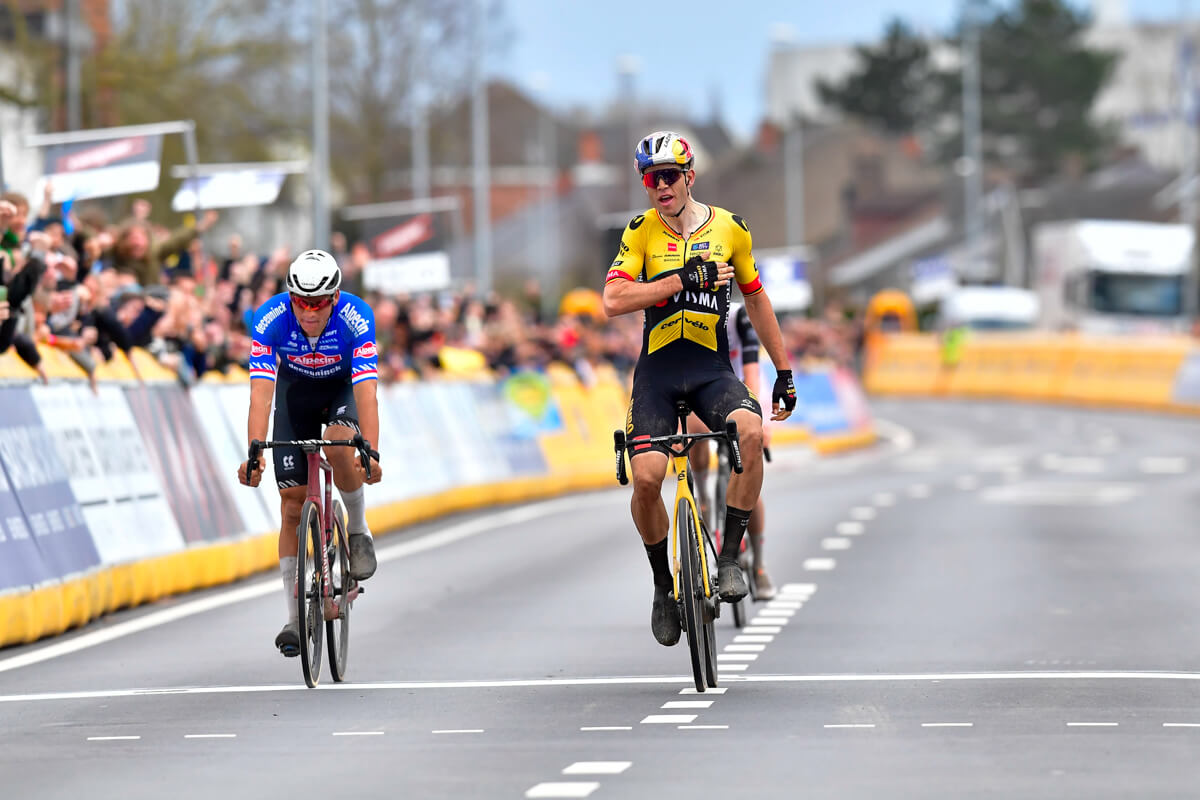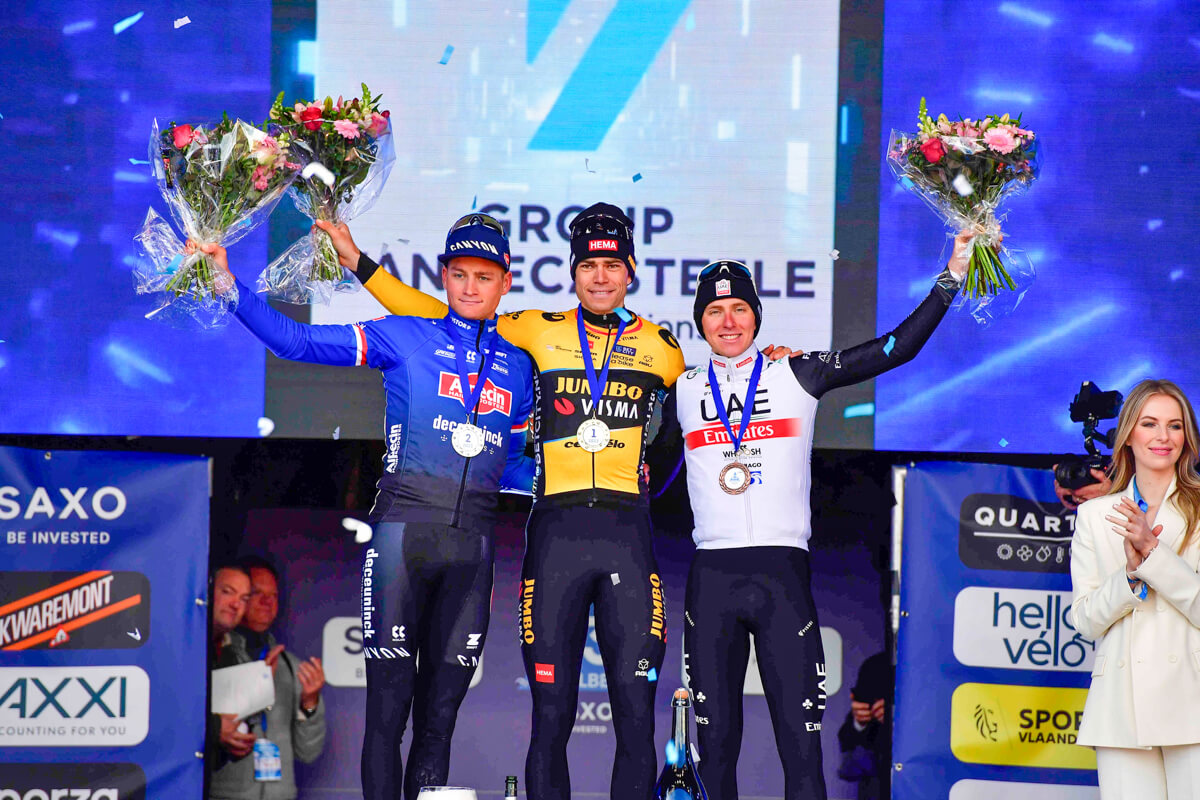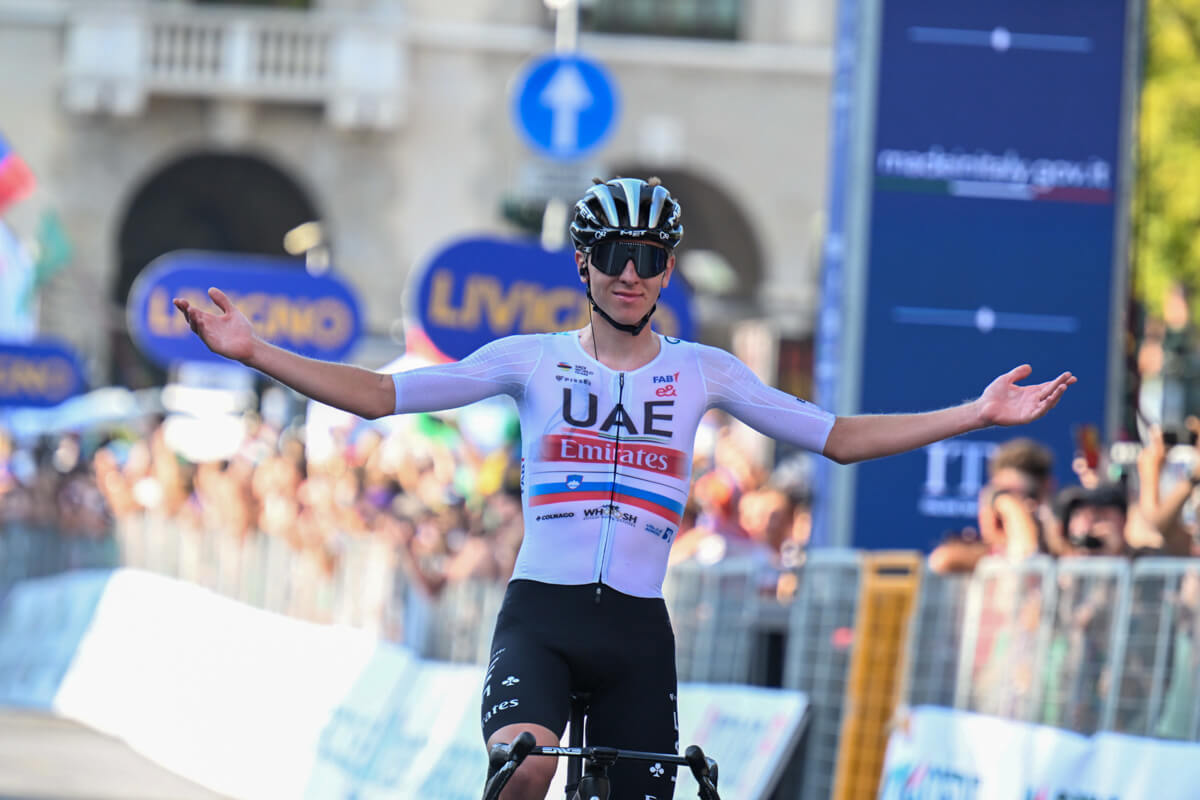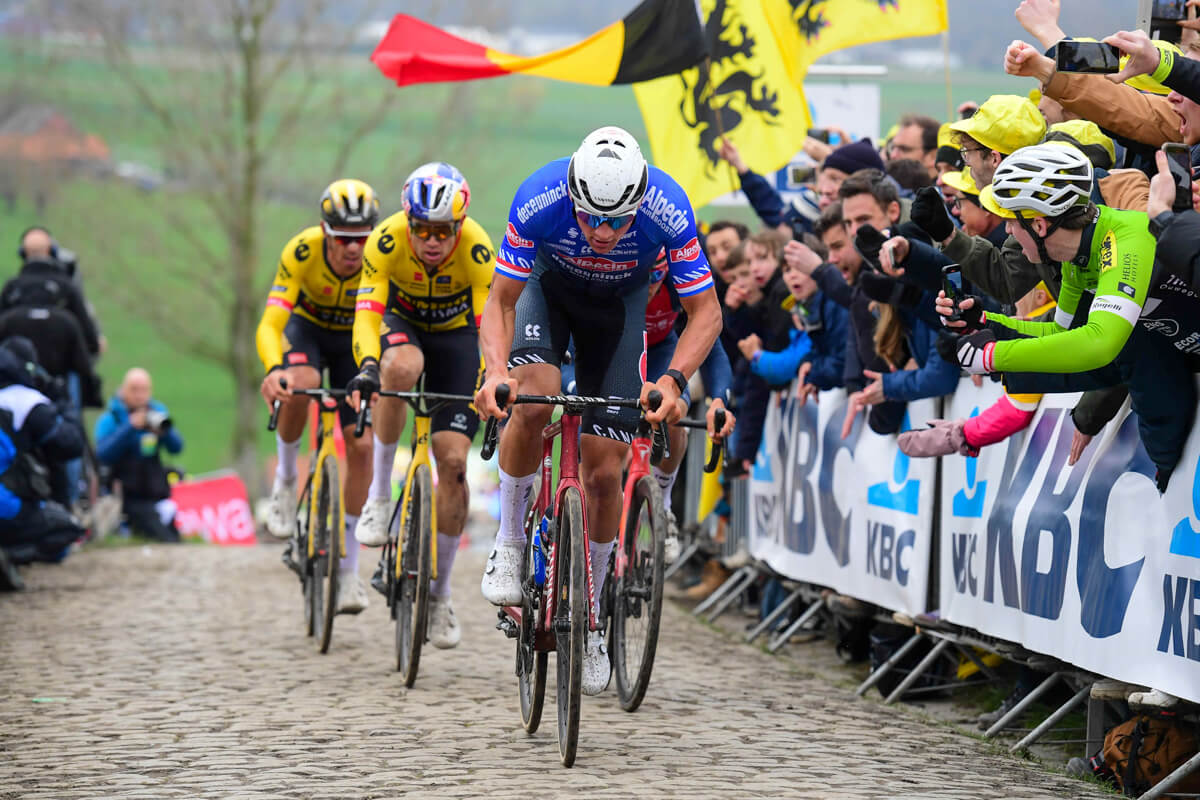— In collaboration with Zach Nehr —
In the final round of our Monument series, we’ll take a closer look at the future of professional cycling. We’ve already seen that Monuments are faster than ever and that it takes a special rider to win them. Now we’re going to see what the future of cycling holds — could Mathieu Van der Poel win Liège–Bastogne–Liège? Could Tadej Pogačar win Milano–San Remo? Only time will tell, but both riders have already come close.
Will There Ever Be Monument Specialists?
Grand Tour GC riders are typically shorter and lighter than the average professional cyclist. That’s because they need to fast in the mountains, which requires a high w/kg output. Smaller riders also have an easier time fueling for and refueling from big efforts, such as a 200km stage in the Tour de France. In a stage like this, a 60kg rider like Jonas Vingegaard may burn 4000-5000 kJs. However, a larger rider like Wout Van Aert may burn 6000-7000 kJs in the same stage.

The human body can only process so much at once, and that’s why we see riders fatigue over the course of a Grand Tour. Their bodies simply can’t keep up with the demands of racing, and some riders completely crack in the third week.
Does the same logic apply to Monuments? Not quite.
The Monuments are typically 5-7 hours long, or 250-300 km, depending on the race. In a one-day race, there is less of a difference between bigger and smaller riders. Bigger riders sometimes have the advantage on flat roads where raw wattage (and aerodynamics) matters more than w/kg.
Even so, looking at the past few years, results have shown that any type and size of rider can win a Monument.
The biggest Monument winners in recent history were Wout Van Aert (1.87m and 78kg) and Fabian Cancellara (1.86m and 80kg).



While the smallest Monument winner in recent history was Esteban Chaves (1.64m and 55kg).
There is no such thing as a Monument specialist in terms of rider size and weight. Some of the smallest and largest riders in the professional peloton have won a Monument in the last few years, and surprise winners continue to occur.
Monuments Are Unpredictable
Many argue that Grand Tours and summit finishes are predictable. Barring crashes or tactical errors, the rider with the highest w/kg typically wins Grand Tours and summit finishes.
Monuments are completely different. There is so much that can happen in a one-day race. Crashes, breakaways, flat tires, and other mechanicals have derailed some of the best riders in a Monument.

Just look at the 2017 Tour of Flanders: Peter Sagan, Greg Van Avermaet, and Sep Vanmarcke were charging towards victory at the biggest race in Belgium when a spectator’s jacket caught Sagan’s handlebars and caused a massive pile-up. Philippe Gilbert went on to win the race, but many were left scratching their heads.
In 2022, Matej Mohorič used a dropper post to get a race-winning gap while descending the Poggio in Milan–San Remo. Mohorič is strong, but he mainly won because of his mechanical advantage and descending skills. No one could’ve predicted that with a w/kg chart.
Predicting the Future of Cycling Monuments
The five cycling Monuments are permanently etched into the history of cycling. Winning a Monument can make a rider’s entire career, and many riders are ultimately remembered for a heroic move they made in a Monument.
Every year, the best cyclists in the world compete in the Monuments, but only a few ride in all five. As cycling becomes more scientific and professional, the Monuments offer a welcome descent into chaos. Surprise winners pop up every few years, and the Monuments are impossible to predict.
Will we see a rider compete in or win all five Monuments in the next few years? It seems extremely unlikely. But if anyone can do it, it’s Tadej Pogačar. The 25-year-old Slovenian has the most diverse skill set of any rider in the world. He’s won everything from the Tour de France to Liège–Bastogne–Liège and the Tour of Flanders.

But you can never count out the rest of the peloton. Riders like Jonas Vingegaard and Primož Roglič are proven Grand Tour winners, but they’ve never given 100% of themselves to try and win the Monuments. They have the best physiology of any cyclist in the world, but only they can choose how they want to use it.
Larger riders like Mathieu Van der Poel and Wout Van Aert have already won Monuments, but are they too big for Liège–Bastogne–Liège and Il Lombardia? They’ve shown that they can climb with some of the best in the world, but not with peak-shape Pogačar.
The second-tier favorites cannot be discounted either. Riders like Filippo Ganna, Brandon McNulty, Marc Hirschi, and Tom Pidcock have shown us flashes of brilliance—one or two days when they were the best cyclists in the world. But can they put together a world-beating ride in a Monument? Only time will tell.
Preview photo: Sirotti

